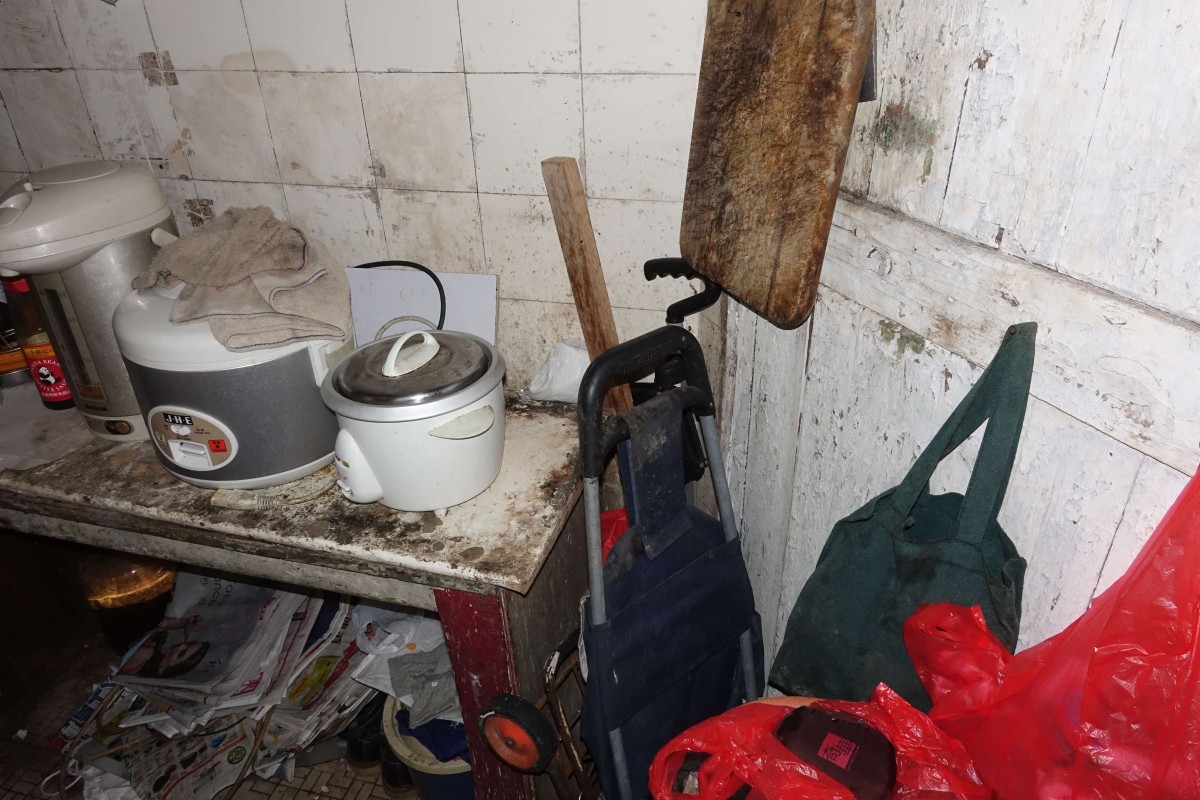
Junior reporters found out about Hong Kong’s housing crisis and how the other half live
Not everyone in Hong Kong gets to live in a comfortable, clean apartment with four walls and a roof
 The kitchen in the subdivided house in Sham Shui Po.
The kitchen in the subdivided house in Sham Shui Po.The housing shortage is a hot issue in Hong Kong. With the help of Unita Subbdivisa, a pressure group for housing problems, junior reporter Veronica Lin visited rooftop slums and subdivided apartments, while Clara Chan learned about the nutritional problems faced by the residents of these places.
The rooftop slum
While rooftops in movies may be covered in flowers, real life can be very different. In the middle of the city, in Sham Shui Po, rooftop slums are shelter to those who are struggling at the very bottom of the social hierarchy. Rather than having four concrete walls and a whitewashed ceiling, this kind of flimsy housing is hit hard by storms and rain, as well as blistering hot weather.
The whole rooftop is one cavernous space. With over 30 households crammed into the same area, there is absolutely no privacy – let alone a sense of stability or a feeling of being at home. While most of us at least get a roof over our heads, the ceilings of these rooftop slums are made out of iron sheeting. There’s absolutely no individual living space; shirts and trousers are all over the place. In the washroom, the shower head is not really a shower head, it’s just a plastic water tube next to the toilet, and there’s a ton of rotten trash lying around.
The subdivided apartment
Barely a square foot of clean floor space is to be found in this type of housing. Instead, mould and dirt pretty much cover every corner of the tiny apartment. The stench of sweat, overused cooking pans and dirty toilets fills the entire room, making it hard to imagine that there are countless underprivileged Hongkongers who are crammed into these small areas for decades – or even their entire lives.
In a city where the rich get to occupy the peak of an island and have bedrooms overlooking the pristine waters of Repulse Bay, the living conditions of the poor are intolerable. For instance, in the subdivided apartment, there is a bed literally placed right above the toilet, two feet away from the ceiling. There are no windows in the individual units, which makes the upcoming summer a tough time to get through for these already broken families.
Veronica Lin
Hidden hunger
“Hidden hunger” is a nutritional deficiency caused by a diet that makes you feel full, but is actually lacking in balanced nutritional value. It’s particularly serious among the residents of subdivided units. Three speakers, who are students at the Chinese University of Hong Kong, shared the reasons behind hidden hunger and created an affordable recipe for the poor.
No space for flames
Living in a room of less than 100 square feet, the residents inevitably have no space for an induction cooker, nor gas for cooking. A mundane rice cooker is all they have to prepare every meal, resulting in repetitive dishes low in nutritional value.
Meanwhile, people who live in cubicle apartments have limited food choices because they often do not own a refrigerator. As a consequence, they are limited to buying food that can only be stored for a short time. In a bid to make sure that no food is left over and goes bad the next day, they usually cook only small portions of food. Moreover, the cooking time for each dish cannot exceed 15 minutes down to a lack of utensils. This leads to an unbalanced diet. For instance, they will choose bread and canned food instead of fruit or seafood, which would provide more nutrition.
Low food budget
Aside from the shortage of time, money is the cause of “hidden hunger” in these living places. The budget for each dish is HK$20 for a family of four, while Oxfam says we need an average HK$47.50 and HK$66.50 for lunch and dinner respectively in order to obtain enough nutrition. It is worth noting that for families in poverty, half of their expenses go on catering every month. Even if they eat out, fast-food restaurants selling unhealthy food will be their first choice for the sake of saving a penny or two. With insufficient funds, it’s really hard to have a balanced diet.
The three speakers shared an affordable recipe of high protein which costs just HK$20: steamed mash tofu patty. It consists of 225g of mashed fish meat, one block of tofu and one teaspoon of cornflour. Mixing the ingredients together and steam the mixture. Before eating, a little pepper, a spoonful of soy sauce and a spoonful of heated oil can be added.
Clara Chan